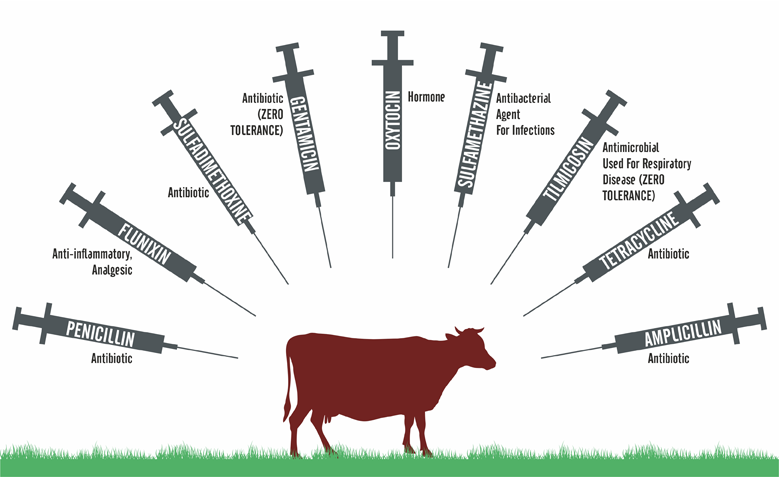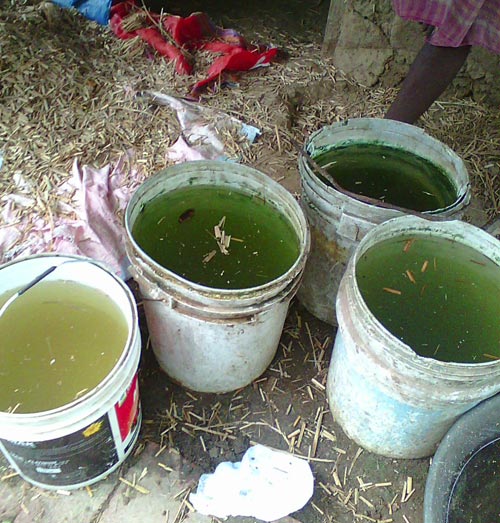Trends in the Milk Bubble
Innovation Not Progress; Spurious not Pure Milk
Most people will agree that progress is achieved through innovation. But what if sometimes progress means to cut out the innovation and to restore what is natural?
Take milk for example, all the innovation made has taken us farther and farther away from the quintessential building block that milk was envisaged to be.
Indian dairy farmers will tell you that they can now produce more milk per cow. An analysis of the total milk in the market will reveal that there is more milk than the cows to account for it. We call this spurious milk. We call it spurious when the cows' milk is an outcome of harmful drugs than sound nutrition. It is a routine practice to inject cows with a daily dose of an illegal drug called oxytocin, which is a hormone to extract more and more milk from the udder until there is nothing left to extract. It is spurious when such hormones in the cows milk catapult our children into early puberty and result in early occurrence of diabetes and heart disease in adults. It is spurious when repeated doses of countless steroids and antibiotics administered to cows translate to dangerous chemicals in milk which over a period of time have serious consequences on health and well being.
Udder to Plastic – a 0% rejection journey
The current dairy practice in India necessitates that the farmer or his agent shall milk the cows and carry the milk to collection centres of milk aggregators such as Amul, Mother Dairy or Brijwasi etc.
These centres will collect all kinds of milk just so long as it is meeting a certain fat composition. Payments made to the farmers by the aggregators is also linked only to the fat content in the milk. There is no hygiene benchmark, or even quality benchmark for collection of milk and no milk is ever rejected by these centres on account of quality. These centres carry no equipments to test the milk on common international parameters such as bacteria count, adulterants or chemicals. From such milk centres, milk will be collected by the aggregators who will treat the milk using various chemicals before releasing it in the market for human consumption. This 0% rejection statistic is less indicative of the quality of milk collected by the centres as it is of the size of the milk bubble we have in India and the deceit being perpetrated by the milk aggregators. This is a worrisome situation.
No withdrawal of milk with antibiotics, hormones or milk from diseased cows
Once the cow is diagnosed as sick, common international practices call for a withdrawal period during which milk from the sick cow is not permitted to be sold in the market. In our Indian context, upon the cow being sick, a self proclaimed doctor shall administer a series of injections which are generally composed of antibiotics and steroids. The milk from the sick cow is sold by the farmer even if the cow suffers from serious health problems. There is no withdrawal period whatsoever.

The Huge Green Fodder Deficit
We are all aware of the popular proverb “As you sow, so shall you reap”. Some families who are fortunate to have a backyard decide to buy a cow and construct a comfortable barn for it. In addition they usually look after the cow either by themselves or through a caretaker. However even for them, the real problem begins when they have to consider the options they have to feed the cow. Think of it like a new born child that demands feed and attention around the clock. Only it will not be so convenient to feed the cow like you would a child for there is no reliable vendor offering any formula feed for a cow. The basic feed for a cow is green fodder or grass just like mother's milk is the basic feed for babies. Fodder ensures good cow health and quality milk. And the issue with fodder is that there is no easy availability of green fodder.
The Indian farmers who find it inconvenient to cultivate fodder will tell you that fodder is not necessary since various types of grains are available which when fed to the cow show satisfactory results, meaning that the milk yield from the grain fed cow would be just as high as a cow on fodder.
We believe that there is a fundamental and serious error in such philosophy since milk yield however satisfactory is beneficial only for the producer and not the consumer whose main concern is potency of milk in terms of the nutrition quality it provides.
We have made it our passion to provide our cows the best quality of green fodder so that maximum nutrition would transpire in the milk. In a largely adulterated food market, if nutrition can be obtained through pure milk, it will hugely reduce the need for vitamin supplements and unnecessary medical expenses that every family now has to incur due to harmful long term effects of spurious food items on our bodies.
The Clean Water Myth
We have often been made to wonder if it matters what the cow consumes just so long as what comes out of the udder is a white milk like substance? In essence, is there a filtration effect that removes the bad effects of any harmful substances the cow may eat or drink? The answer is no. What the cow consumes is reflected in the milk it gives. For example, if the water or even feed source is high in certain chemicals or toxins which are adverse to a cow’s health, the milk too is highly likely to contain the damaging chemical and thereby hurt the consumer. So a good water source is essential for healthy milk quality. Veterinary scientists will tell you that a cow should consume between 80 to 100 liters of clean water per day.
The average Indian farmer does not have the wherewithal to invest in borewells or even arrange for such high amounts of clean water. He instead relies upon the most convenient source of water which is generally a nearby pond.
We have observed that these ponds are highly contaminated sources of water and often the contaminants are solid human waste and other forms of toxic and hazardous materials.
For the milk aggregators however nothing is a deterrent as long as they can sell the milk.
Below is a picture showing cockroach and fungi contamination in the pond water being used as drinking water for cows being milked by an Amul farmer in West Bengal.

